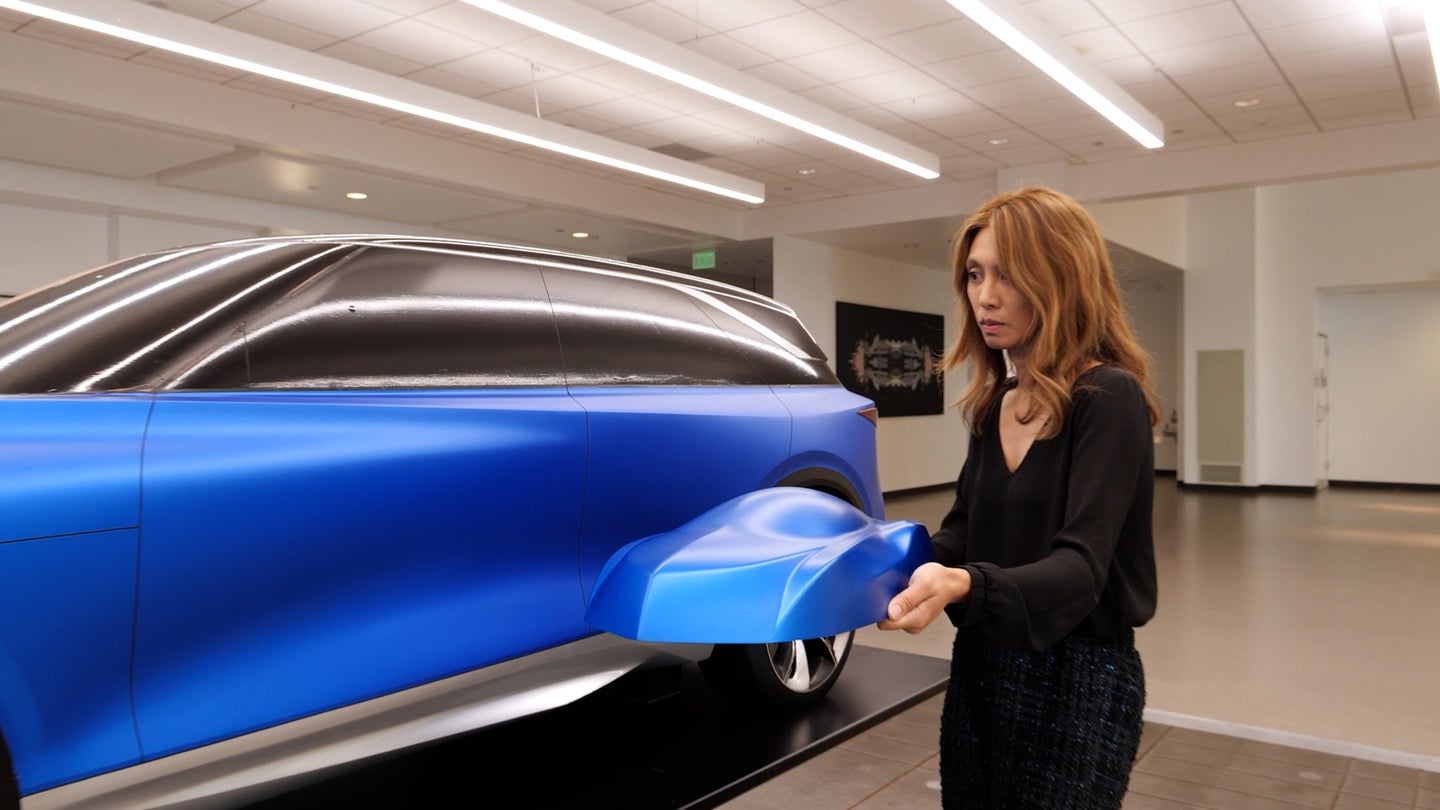
The most popular car paint color in America is white. The hue has names like Blizzard White, Snow Quartz, and Wind Chill Pearl. Black, gray, and silver aren’t far behind on the popularity scale, rounding out the vast majority of cars on the road.
These stats don’t mean that automakers are staying monochrome, though. On the contrary, Italian automaker Fiat thumbed its nose at bland colors and declared earlier this year it wouldn’t make cars in any shade of gray. Jeep likes to debut names for its vehicle finishes that are as colorful as the paint itself: Snazzberry, Hellayella, and Punk’N, for example. And Mazda has established itself as a colorful brand with its ubiquitous Soul Red Crystal Metallic and new Artisan Red, which morphs from a black cherry look in the sunlight to a dark, almost-black tint on a cloudy day or at dawn and dusk.
Automakers use electrostatic spray guns to apply even layers of paint on the vehicles they produce, and car paint has evolved into a high-tech science that delivers more colors than designers imagined even 10 years ago.
For example, Honda’s luxury arm, Acura, debuted its new Precision EV concept last year; it sports an arresting blue finish that seems to radiate from the inside out. Gypsy Modina, who leads the brand’s color and materials group, created the Double Apex Blue Pearl tint, which will grace the 2024 ZDX Type S.
This is how Modina whips up pigments that set Acura apart and how she sees the future of paint and color technology.

Color inspiration
Modina got her degree in fine arts at the College for Creative Studies in Detroit, the alma mater of notable automotive designers like Ralph Gilles, chief design officer for Stellantis, and John Krsteski, senior chief designer for Genesis. She started working for Acura 18 years ago, and now mixes colors like a mad scientist for the brand to come up with bespoke paint finishes.
Her job seems more science than art. She has to understand how light bounces from the vehicle to the eye and how the color accentuates the form and fits the personality and demographic of that car.
“I don’t think I knew I’d be doing so much science and math [in this field],” Modina says wryly. “It’s funny, because I find it hard to follow a recipe when cooking.”
She doesn’t sit at her desk dreaming up color combinations. Instead, the process is more exciting: Modina travels the world seeking inspiration and finds it in fashion-forward places like Milan, Italy but also in nature, hiking in locations as far-flung as Kruger National Park in South Africa.
What Modina sees coming down the pipeline is colors and materials that are designed with the goal of minimizing waste and pollution by recycling, and using more natural versus chemical materials. Interestingly, that doesn’t align with what some manufacturers are showing off on the technology side, like the BMW SUV that features a specially developed body wrap stimulated by electrical signals to change color.
“Now you’re seeing concepts that change colors and car bodies that are more like screens,” Modina says. “There are things you can create that can be more solutions to a circular economy. The goal is for circularity, and I do think optimistically that there are material technologies and sciences that can [contribute to that].”
The topic has a colorful history: Back when cars used to be spray-painted by hand with layers upon layers of pigment, the overspray would build up in the paint bays. Over time, chunks of buildup needed to be removed, and someone along the way discovered the beauty of baked-on layers of color that could be polished into gemlike stones. You’ll find “Fordite” stones (also called “motor agate” or “Detroit agate”) as pieces of jewelry on Etsy and other sites. But the process that created these multicolored polished stones no longer exists.

Car paint that glows even when it’s cloudy
On a cloudy and gray day during Monterey Car Week in August 2022, Acura unveiled its Precision EV in Double Apex Blue. That kind of weather could be an unfortunate backdrop for the high-profile presentation of a new car, but the blue finish looked like it was glowing even through the gloom. Modina and the design team breathed a sigh of relief.
“We were giving each other high fives,” Modina says. “There aren’t that many colors that do that.”
The glow is a physical manifestation of what Acura’s first all-electric vehicle, scheduled for delivery next summer, represents.

“We knew electrification was coming into play and we wanted the blue to go more liquid and more sheer,” Modina says. “There’s something about electrification that has a smoothness to it and we wanted [the paint to appear] more liquid. We also wanted it to be unique; we saw in the US market that people are more open to bold colors.”
The form language (the term refers to design styles unique to each manufacturer) and shape are closely related to the brand, Modina says. She and her team design many different types of hues, but the brand’s Double Apex Blue and Performance Red stand out because they must lay on the body in a way that matches the brand’s personality. Blue, in particular, is a heritage color for Acura, and has been refreshed over the years. This particular blue includes nano-pigments, which are finer particles that load the color with higher saturation, making the tint appear more intense.
Light, color, and form work together with our emotions to stimulate a response; in Acura’s case, the brand wants us to see its cars as fast and performance-oriented. Even if they’re popular, cars in bland colors just can’t measure up.
The post A new blue paint color for cars uses nano-pigments to boost its intensity appeared first on Popular Science.
Articles may contain affiliate links which enable us to share in the revenue of any purchases made.
from | Popular Science https://ift.tt/LMCwXS7




0 Comments